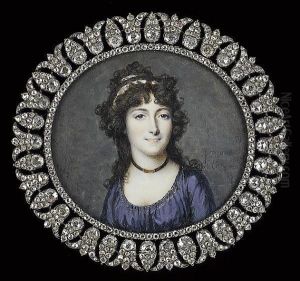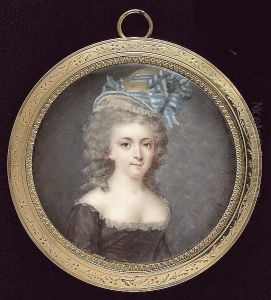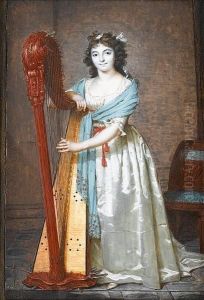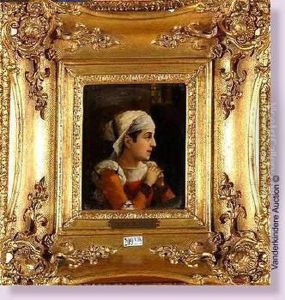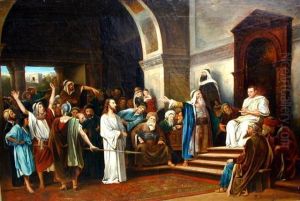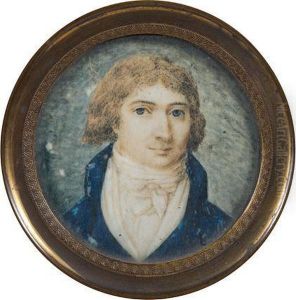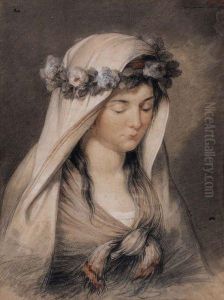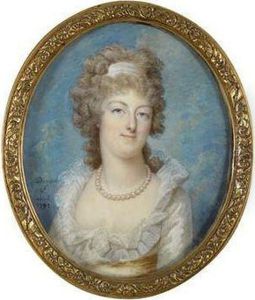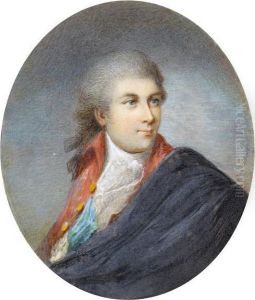Francois I Dumont Paintings
François Dumont, born in 1751 in Lunéville, France, was a prominent miniature painter during the late 18th and early 19th centuries. His career flourished particularly during the reign of Louis XVI and into the Napoleonic era. Dumont studied art under the guidance of Jean-Baptiste Jacques Augustin, who was another leading figure in miniature painting in France.
Dumont's work gained significant attention for its exquisitely detailed and finely crafted portraits. He became a favored artist among the French aristocracy and later the imperial family, receiving numerous commissions that allowed him to refine his technique and style. His miniatures are characterized by their delicate brushwork and often feature rich coloration and intricate detail, capturing the essence and character of his subjects.
During the French Revolution, Dumont's artistic career was put at risk, as many of his patrons were members of the aristocracy. However, he managed to navigate through this tumultuous period by adapting to the changing political landscape and finding new patrons among the rising classes. With the rise of Napoleon Bonaparte, Dumont's career saw a resurgence. He painted portraits of Napoleon and other prominent figures of the time, solidifying his reputation as one of the era's leading miniature painters.
After the fall of Napoleon, Dumont continued to work and receive commissions, although the demand for miniature portraits began to decline with the advent of photography. He was able to maintain his status as an esteemed artist until his death in 1831.
François Dumont is remembered for his exceptional contribution to the art of miniature painting. His works are preserved in several museums and private collections around the world, serving as a testament to his skill and the elegance of miniature portraiture during the late 18th and early 19th centuries.
